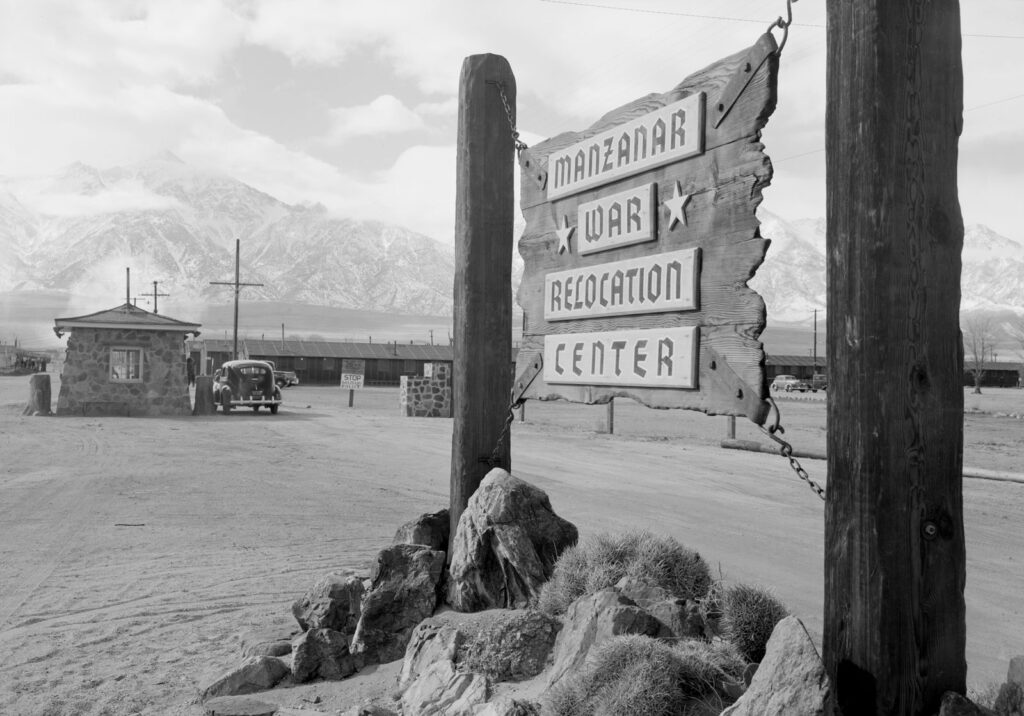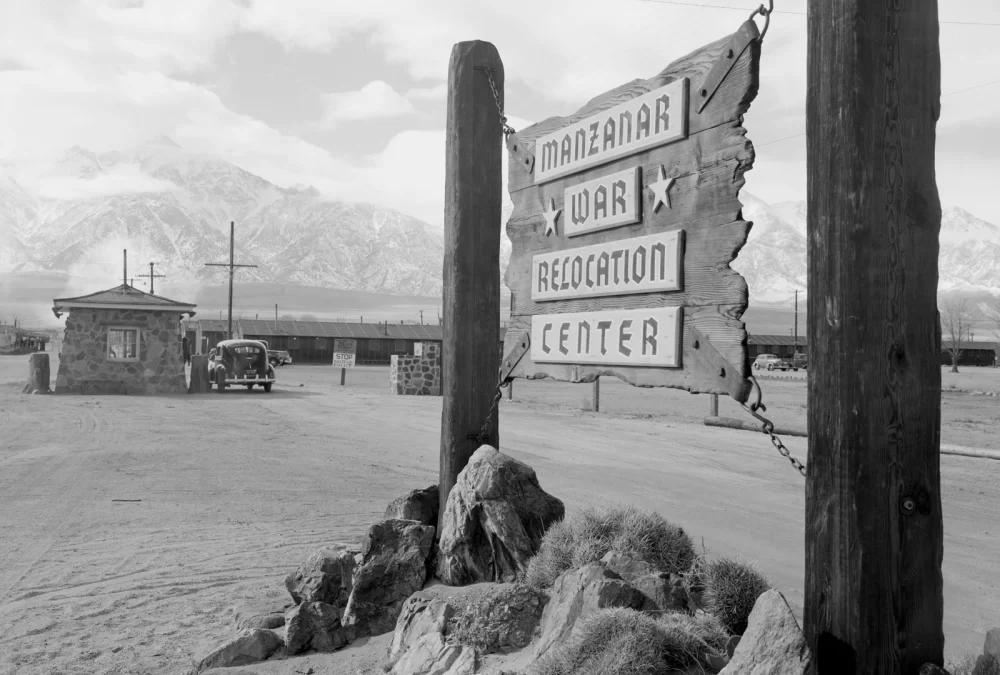Following the attack on Pearl Harbor on December 7, 1941, more than 120,000 Japanese Americans were gathered from their homes along the Pacific coast and relocated to camps within the interior of the country. The large majority of these men, women, and children were US citizens.
Their story is told in Infamy: The Shocking Story of the Japanese American Internment in World War II (2015) by Richard Reeves. In this moment of national tension, as the fear of a West coast invasion was palpable, the American government – per Executive Order 9066 issued by President Franklin Roosevelt – abandoned any pretense of civil liberties while justifying these actions as a matter of “military necessity.”
Many families were given very little notice to make arrangements for their possessions, including homes, farms, and businesses. With no idea when or if they would be returning, and permitted to bring only what they could carry, many evacuees were compelled to sell their belongings to opportunistic profiteers. While there were a few instances of white friends and neighbors assisting the Japanese with their belongings, others swooped in like vultures.

The first stop for many were a number of “assembly centers” including the Santa Anita racetrack in Los Angeles County where evacuees were packed into horse stalls reeking of manure and urine. Eventually, ten war relocation camps were constructed; including Manzanar and Tule Lake in California. Despite efforts to portray them as comfortable communities, these facilities were surrounded by barbed wire fencing and patrolled from guard towers by machine-gun wielding soldiers. Families were crowded into hastily erected barracks in the remotest parts of the West that provided scant protection from extreme heat and cold; from wind and dust and snow.
The war exacerbated long-standing stereotypes of a “yellow peril” threatening white America. US immigration policies had long favored newcomers from Europe over those from Asia. First generation immigrants from Japan were prohibited from becoming citizens. Their children, even though they “were thoroughly American in their hopes and dreams,” as Reeves writes, nonetheless had their lives completely uprooted.
There is little doubt that racism drove these events. There was no equivalent large-scale internment of German and Italian Americans whose ethnic roots lay with the two other Axis Power enemies of the US. Newspaper editorials across the country castigated the Japanese and accused them of planning to sabotage transportation, communication, and war production facilities. Political cartoons and propaganda posters caricatured Japanese soldiers and American Japanese in much the same way.
The majority of white Americans were caught up in a wave of anti-Japanese sentiment. Sympathetic whites faced the wrath of neighbors who ridiculed them as “Jap lovers.” As the war dragged on, many Americans adopted the attitude expressed by US Senator Tom Stewart of Tennessee. “There is not a single Japanese in this country who would not stab you in the back.”
Following the American victory at Midway in June of 1942, the threat of a West coast invasion diminished dramatically. No matter; public opinion against American Japanese had hardened. Their internment continued throughout the duration of the war.
While many internees grew bitter at the injustice, Reeves writes, “the overwhelming majority of the American Japanese accepted their lot with little complaint” and with the great desire to demonstrate their loyalty to the United States. Schools in the camps were filled with students who continued to recite the Pledge of Allegiance. Many participated in traditional American scouting programs. Baseball leagues were formed.
In time, American citizens of Japanese descent were allowed to serve in the armed forces. Several thousand served secretly in the Pacific, primarily as translators and interpreters. In Europe, the segregated 100th Infantry Battalion/442nd Regimental Combat team became the most decorated military unit in US history while suffering great casualties fighting in Italy, France, and Germany. In the waning days of the war, Private Shiro Kashino – who had been interned at the Minidoka relocation camp – was one of the first American soldiers to arrive at the Dachau concentration camp. “This,” he said, “is exactly what they built for us in Idaho.” Camp survivors were hesitant to believe that the Japanese troops were American soldiers.
Fred Korematsu resisted internment and was arrested. For his efforts, he was not only brought before the criminal justice system, he was branded as a rabble rouser by those who believed his protests would make life more difficult for Japanese Americans.
His case reached the Supreme Court in 1944 and, in a 6-3 decision, the court ruled that Korematsu’s treatment was not due to his race but rather to “properly constituted security measures.”
In his dissent, however, Justice Robert Jackson saw the danger. “The Court for all time has validated the principle of racial discrimination,” Jackson wrote, “The principle then lies about like a loaded weapon, ready” to be wielded upon the “plausible claim of an urgent need.”
Justice Frank Murphy’s dissent expressed white America’s struggle. “All residents of this nation,” he wrote, “are kin in some way by blood and culture to a foreign land. Yet they are primarily and necessarily a part of this new civilization of the United States… entitled to all of the rights and freedoms granted by the Constitution.”
As in many other chapters of American history, it sometimes takes a little while to set things straight.
In 1976, President Gerald Ford formally apologized for Japanese WWII internment. In 1983, a federal judge vacated Korematsu’s conviction after evidence emerged that the government had withheld FBI reports that Japanese Americans did not pose a threat to national security.
In 1988, a federal law granted $20,000 in reparations to each surviving internee and ten years later, President Bill Clinton awarded Korematsu the Presidential Medal of Freedom.
In 2010, California declared January 30 as the Fred Korematsu Day of Civil Liberties and the Constitution.
Sometimes those who have suffered the worst of our country’s abuses have the most to teach us about what it means to be an American. “Her [America’s] history is full of errors,” Marion Konishi said in 1943 while interned at the Amachi Relocation Center in Colorado, “but with each mistake she has learned…”





